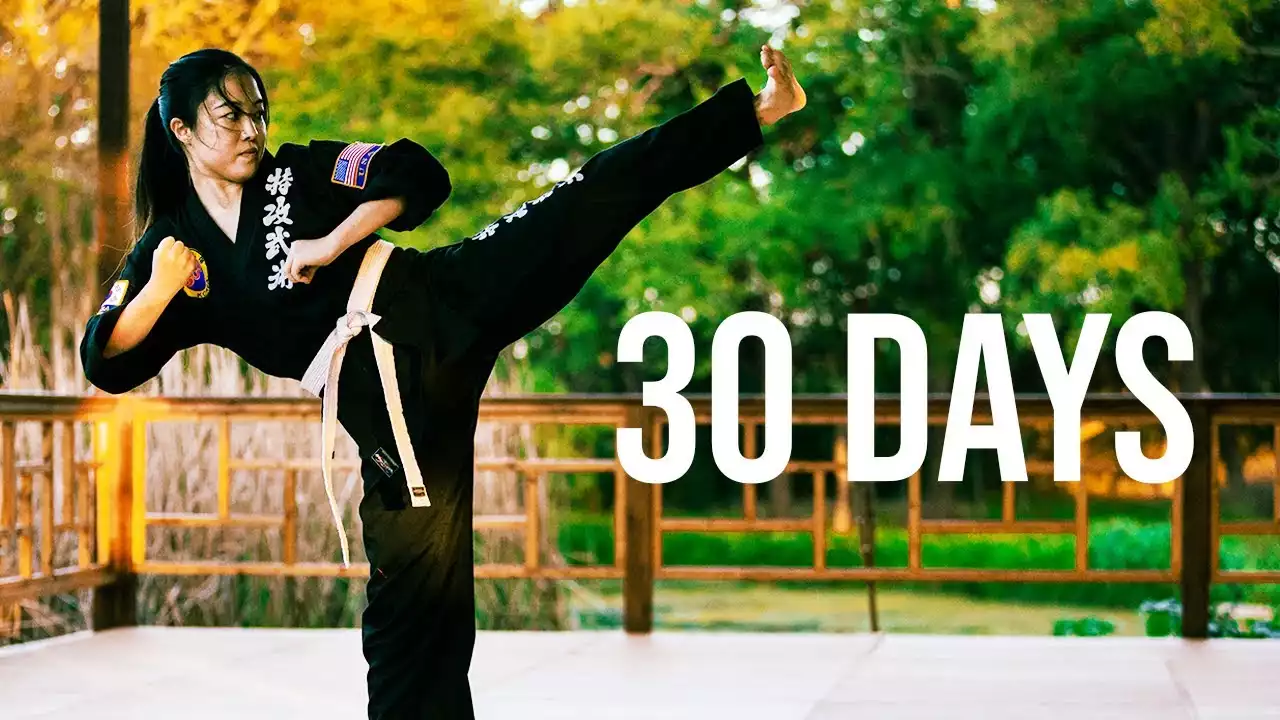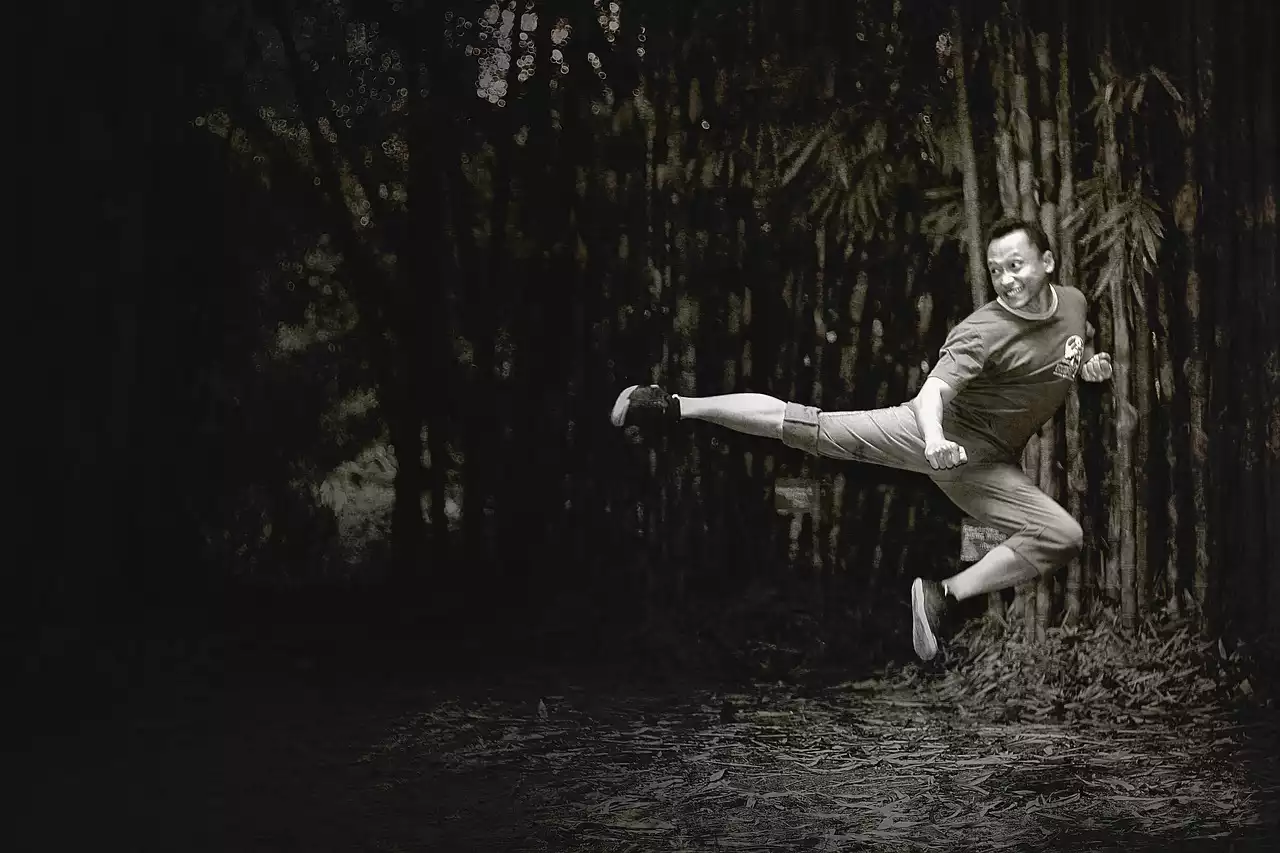The different belt levels in Taekwondo and their requirements
Taekwondo, a martial art known for its dynamic kicks and powerful strikes, has a structured belt system that signifies the progress and skill level of practitioners. From the initial white belt to the coveted black belt, each rank represents a milestone in the journey to mastery. Let's take a closer look at the different belt levels and their requirements.
The journey begins with the white belt, symbolizing a beginner's level. As a white belt, practitioners focus on learning the fundamental techniques and basic forms of Taekwondo. The next belt level is the yellow belt, followed by the green belt, blue belt, red belt, and finally, the black belt. Each belt level introduces new techniques, forms, and self-defense skills, gradually building upon the foundation established in the previous level.
To progress from one belt level to the next, practitioners must demonstrate their proficiency in specific techniques, forms, and sparring. These requirements may include executing precise kicks, punches, blocks, and combinations, as well as showcasing agility, speed, and accuracy in their movements. Additionally, practitioners may be tested on their knowledge of Taekwondo history, philosophy, and etiquette.
The average time it takes to earn each belt level
While the time it takes to earn each belt level can vary depending on individual progress, training frequency, and dedication, there are general guidelines to consider. It's important to note that the timeframes mentioned are approximate and can vary between different Taekwondo schools or organizations.
On average, it takes around 3 to 6 months to progress from white belt to yellow belt. The yellow belt to green belt transition typically takes 6 to 9 months, followed by another 9 to 12 months to reach the blue belt. From blue belt to red belt, the journey can take 12 to 18 months. Finally, the path to black belt usually takes several years, with an average timeframe of 3 to 5 years. It's important to remember that these timeframes are estimates and can be influenced by various factors.
Factors that can affect the time it takes to earn a black belt
The time it takes to earn a black belt is not solely determined by the number of years or months spent in training. Several factors can influence the progression and ultimately impact the time it takes to achieve this prestigious rank.
One significant factor is the individual's commitment and dedication to their practice. Consistently attending classes, practicing outside of training hours, and actively seeking feedback from instructors can greatly accelerate progress. Similarly, the frequency of training sessions can significantly impact the speed at which a practitioner advances through the belt levels. Regular training allows for more consistent practice and muscle memory development, ultimately leading to quicker progress.
5 Black Belts vs 2 Fakes | Odd One Out
Another factor to consider is the instructor's teaching style and the training environment. An experienced and knowledgeable instructor who provides clear guidance and constructive feedback can facilitate faster skill development. Additionally, a supportive and motivating training environment can boost a practitioner's confidence and encourage them to push their limits.
The importance of consistency and dedication in progressing through the belt levels
Consistency and dedication are key components in the journey to earning a black belt in Taekwondo. As the saying goes, "practice makes perfect," and this holds true in martial arts. Regular and focused practice allows practitioners to refine their techniques, improve their physical fitness, and develop mental resilience.
Consistency in training builds a strong foundation and muscle memory, making it easier to learn and execute new techniques. Additionally, regular practice helps improve flexibility, strength, and endurance, which are crucial aspects of Taekwondo. By committing to a consistent training schedule, practitioners can gradually progress through the belt levels and develop a deeper understanding of the art.
Dedication is equally important in the journey to earning a black belt. It involves setting goals, staying motivated, and overcoming challenges along the way. The path to a black belt is not always smooth, and there may be times when practitioners face physical or mental obstacles. However, with dedication and a positive mindset, these challenges can be overcome, leading to personal growth and a stronger commitment to the art.
Training techniques and tips for accelerating your progress in Taekwondo
For those looking to accelerate their progress in Taekwondo, there are several training techniques and tips that can be implemented.
Firstly, setting specific and achievable goals is crucial. Breaking down the journey to a black belt into smaller milestones can provide a sense of accomplishment and keep practitioners motivated. By setting goals for each training session or week, practitioners can focus on specific areas for improvement and track their progress over time.
Additionally, incorporating supplementary training outside of regular classes can be beneficial. This can include strength and conditioning exercises, flexibility training, and practicing techniques at home. By dedicating extra time to training, practitioners can reinforce their skills and develop a deeper understanding of Taekwondo.
Another valuable tip is to seek feedback and guidance from instructors. Instructors are there to provide support, correct technique errors, and offer valuable insights. Actively asking for feedback and incorporating it into training sessions can help refine techniques and enhance overall performance.
The mental and physical challenges of earning a black belt
Earning a black belt in Taekwondo is not merely a physical achievement but also a mental and emotional one. The journey to black belt presents various challenges that test a practitioner's resilience, discipline, and determination.
Physically, the training can be demanding. From intense workouts and conditioning exercises to repeated practice of techniques and forms, practitioners must push their bodies to new limits. This physical demand requires a commitment to proper nutrition, rest, and recovery to support optimal performance and prevent injuries.
Mentally, the journey to black belt requires focus, concentration, and the ability to overcome self-doubt and frustration. Practitioners must remain dedicated to their practice, even when progress seems slow or when faced with setbacks. Developing mental fortitude and perseverance is a vital aspect of earning a black belt.
Emotionally, the journey can be a rollercoaster of emotions. There may be moments of self-doubt, frustration, or disappointment, but also moments of triumph, pride, and joy. The emotional growth that occurs throughout the journey to black belt is invaluable, shaping practitioners into stronger individuals both on and off the mat.
Stories and experiences from individuals who have earned their black belts
Listening to the stories and experiences of individuals who have earned their black belts can provide valuable insights into the journey and its transformative nature. Each practitioner's path is unique, filled with personal triumphs and challenges.
Many black belts recount moments of doubt or difficulties they faced along the way. However, through perseverance and dedication, they ultimately achieved their goal. Their stories serve as a reminder that the journey to black belt is not always easy, but the rewards are immeasurable.
Furthermore, black belts often express how Taekwondo has positively influenced their lives. Beyond the physical skills acquired, Taekwondo instills discipline, self-confidence, and a sense of accomplishment. It teaches practitioners to overcome obstacles, set goals, and work diligently to achieve them. These life skills extend far beyond the training hall and can have a profound impact on personal and professional aspects of one's life.
The benefits of earning a black belt in Taekwondo beyond the physical skills
Earning a black belt in Taekwondo carries numerous benefits that extend beyond the acquisition of physical skills. While the mastery of techniques and self-defense abilities are important, the personal growth and character development that accompany the journey are equally valuable.
One of the key benefits is increased self-confidence. Through the progression of belt levels, practitioners gain confidence in their abilities and their capacity to overcome challenges. This self-assurance can extend to other areas of life, empowering individuals to face new challenges with resilience and determination.
Additionally, Taekwondo promotes discipline and self-control. The rigorous training and adherence to principles and etiquette foster discipline and self-control in practitioners. These qualities can translate into improved focus, better decision-making, and the ability to manage stress effectively.
Furthermore, earning a black belt cultivates a sense of respect and humility. Practitioners learn to respect their instructors, fellow practitioners, and the art itself. This respect extends to everyday interactions, fostering better relationships and a deeper understanding of oneself and others.
Conclusion and encouragement to embark on the journey to earning a black belt
The journey to becoming a black belt in Taekwondo is a transformative experience that requires time, dedication, and perseverance. It is a path filled with physical, mental, and emotional challenges, but also with immeasurable rewards.
Understanding the timeline for achieving a black belt provides valuable insights for practitioners at any stage of their journey. Whether you are a beginner just starting or a seasoned practitioner looking to set new goals, the path to black belt is one that fosters personal growth, discipline, and resilience.
So, if you are ready to embark on this extraordinary journey, remember to embrace the challenges, stay committed, and enjoy the process. Your path to earning a black belt in Taekwondo will not only empower you with physical skills but also shape you into a stronger and more confident individual both inside and outside the training hall.















